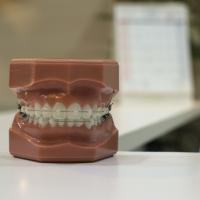Home > Blog > Skin and Body
Understanding the Stages Involved in Getting Dental Implants
When it comes to replacing lost teeth the benefits of dental implants make them the best option out there. Not only will your implants look and feel like natural teeth, but they’re also easy to maintain, reliable and will help preserve your existing natural teeth.
That being said it is important for you to know that getting dental implants is a fairly lengthy process. It isn’t something that you can get done in a single visit to your dentist, and at times it may take many months before the implant is finally put in place.
- Initial consultation
The first step to get implants is to visit a dentist for an initial consultation. During this consultation the dentist will examine your teeth, review your medical and dental history, and also take X-rays of your teeth and gums. In some cases molds of your teeth may also be taken, as well as CT scans of your jawbone.
- Bone graft (may be skipped)
In some cases if your jawbone can’t support an implant, bone may have to be grafted from elsewhere. Assuming that is the case the graft will need to be performed and may take anything from 4 to 12 months to heal and then further scans will need to be performed to determine if it is viable.
- Implant placement
Assuming the jawbone (or graft) is viable, the first step is to place the implant in your jaw. The implant will essentially take the place of the root, and acts as a base for the artificial tooth that will be placed on it. After the procedure, it will have to heal and fuse with the jawbone before anything further can be done – which can take up to several months.
- Abutment placement
Once the implant has fused, an extension known as an abutment will be placed on top of it that will eventually attach to the artificial teeth. At times this is done during the same procedure as the original placement, but that will be at your dentists’ discretion and it can make cleaning more difficult. After the abutment is placed some healing will be required, but it should only be a few weeks.
- Crown placement
Finally the crown (i.e. artificial tooth) will be affixed to the implant. Prior to this a temporary crown may have been used, in which case it will be replaced by the permanent version.
As you can see the process involved in getting dental implants Exeter can be long and fairly drawn out – and will vary on a case by case basis. It is important that you know what you’re getting into, but at the same time also keep in mind the fact that the benefits will more than make up for it in the long term.
More to Read:
Previous Posts:






